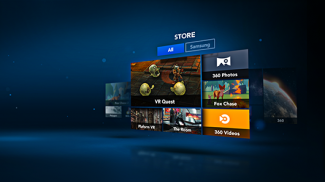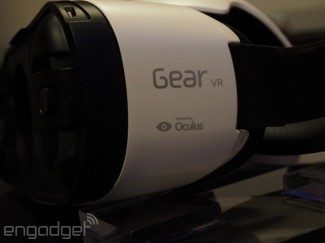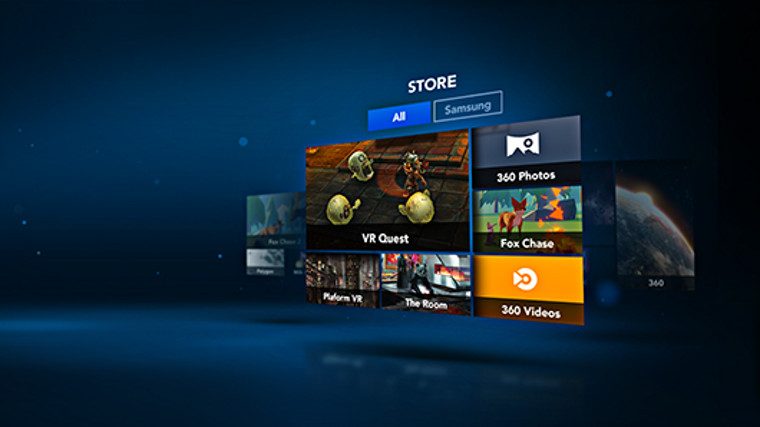
As more and more information piles in on the long rumoured Samsung Gear VR Headset announced at Samsung’s special event today, it’s becoming clear just how integral Oculus are to not only the hardware but also content and the delivery of that content. Oculus Home is further confirmation that Oculus VR’s long term goal is in delivering content rather than hardware.
Oculus VR’s Gateway to the Mobile Content Market

The branding is subtle, but there can be no doubt that Oculus VR are the muscle behind Samsung’s new Gear VR Headset. It leverages Oculus’ unrivalled knowledge of building VR Headset hardware to overcome limitations of mobile hardware and provides what could arguably be said to be the best possible mobile phone based VR solution possible right now.
But why did Oculus enter into this partnership, seemingly underway at Samsung for 1.5 years now? The answer seems fairly straightforward, it extends the company’s reach to the mobile market which means that their now very open strategy of long term content delivery as a revenue stream is given a potentially enormous shot in the arm.
But, how to you enable the path of least resistance to persuading customers to part with their hard-earned cash? User interface is key of course, as it is to the overall VR Gear experience. So it makes sense that Oculus Home exists.
Oculus Home is a VR enabled interface that acts as a head-tracked portal into VR specific content to be used with Samsung’s new device. And, even at this early stage, it looks quite neat. Clearly taking cues from Android’s default content portal, Google Play, its ‘look at what you want’ mechanic will be familiar to anyone who’s used applications based around the Oculus Rift and offers a way for users to purchase and play content, delivered by what Oculus VR is dubbing the Oculus Store, without leaving virtual reality.
 Currently Oculus is very clear that the applications are in beta right now, but it’s fair to assume that what we’re seeing is a good approximation of what we’ll see when the device finally comes to market. It’s also fair to assume that content on the store will be fed via the same content quality control flow as exists now in Oculus’ PC based content portal, Oculus Share – albeit presumably payment options and perhaps much more stringent QA processes (after all if you’re paying for content, you’re standards for the experience are higher).
Currently Oculus is very clear that the applications are in beta right now, but it’s fair to assume that what we’re seeing is a good approximation of what we’ll see when the device finally comes to market. It’s also fair to assume that content on the store will be fed via the same content quality control flow as exists now in Oculus’ PC based content portal, Oculus Share – albeit presumably payment options and perhaps much more stringent QA processes (after all if you’re paying for content, you’re standards for the experience are higher).
It’s going to be interesting to see how this develops and how much ‘space’ Oculus will be afforded alongside Samsung’s own content offerings.







